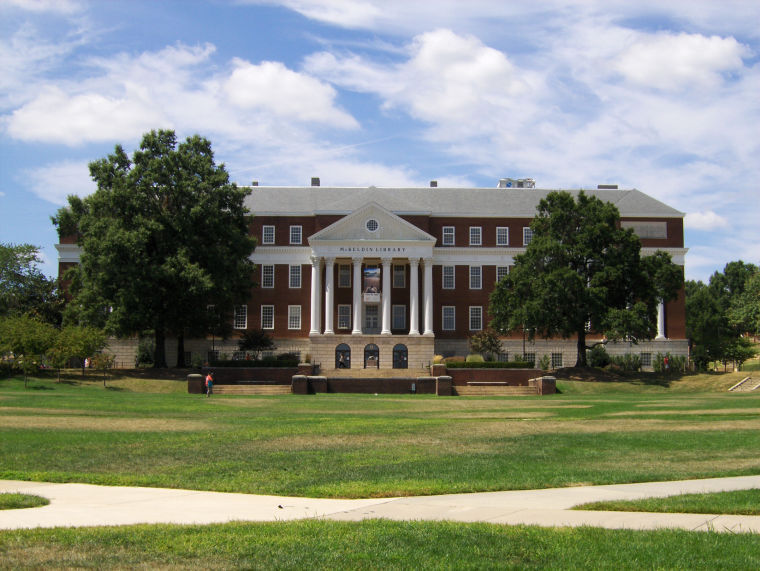Views expressed in opinion columns are the author’s own.
Last week, I wrote about how the University of Maryland is constantly embarrassing itself to win the approval — and cash — of private interests. I pointed to a broad campaign against higher education austerity as the only remedy. This week, I want to expand on why such a movement is both wise and possible.
This university’s various stakeholders — students, parents, faculty, staff, administration — often have diverging interests. Faculty might disagree with the graduate employees under their supervision over unionization efforts. University staff frequently clash with administration over issues like parking fees. Tensions can even exist within these groups: Deans of various departments might jockey for funding and administrative priority.
These are all real conflicts, real instances of clashing interests. However, there is next to no divergence when it comes to the basic issue of state funding for higher education: More money is good for everyone in the broad university community. After a massive increase in public funding, students and parents should see lower tuition and reduced financial strain, staff should get a raise, faculty might spend more time researching and teaching and less time filling out grant applications, and administration wouldn’t have to devote every waking hour to fundraising. There are, of course, profoundly important questions of how to justly distribute a big budget increase, but it’s unlikely that many folks would argue such an increase isn’t welcome in the first place.
It just so happens that the issue on which there is the greatest promise for agreement is also the single biggest issue facing this university and public higher education writ large. In March, university President Wallace Loh said that navigating possible tuition hikes to compensate for insufficient state funding will be the defining challenge facing his successor. Across the nation, governments in all but four states appropriated less per college student in 2018 than they did in 2008. The average cut per student during that 10-year period was 16 percent.
I remember spending a couple of years observing the discourse surrounding the construction of the Cole Field House. Opponents of the project pointed out that the practice facility was a stupid idea and a waste of money, to which supporters responded that much of the funding came from private sources. Many were forced into a defensive posture, where they meekly requested that if the university were to embark on big, stupid projects, they at least refrain from using state cash.
What a sad state of affairs. The university should have the resources to advance non-stupid projects at its own discretion — instead of waiting for money and direction from some guy who sells exercise shirts to dads.
We should be working together. We need a broad coalition of university stakeholders to band together to demand more cash from Annapolis. Student groups should unite with employee unions, with faculty organizations, even with administration — and they should get their parents involved, too. What is required is organization — a coalition like ProtectUMD, but extending beyond just student groups — a united front, speaking with one voice.
The immediate barrier to increased state funding is, naturally, state politicians unwilling to give us more money. For public officials, policy position change happens in two main ways: through adaptation or through replacement. Either sitting politicians change their stance on an issue, or they’re replaced by someone who supports a new stance. A broad university coalition against austerity could encourage both.
On the replacement front, such a coalition could devise a short suite of policy demands. It could then target pro-austerity members of the legislature and offer campaign support — door knocking, phone banking, etc. — to their campaign opponents, provided they sign onto the demands. The governor of Maryland holds remarkable power over the state budgeting process, so the coalition should also work tirelessly to elect a replacement for Gov. Larry Hogan who supports their policy suite.
Hogan has touted his increases in K-12 spending. That’s a good thing! But he remained needlessly hostile towards the state workers employed by the university system, and therein lies the problem — they can’t do it on their own. None of us can, really.
Regarding adaptation, an anti-austerity coalition could put direct pressure on the governor and fellow state lawmakers. What if, for one day (or week), everyone on campus agreed not to go to school or work — no classes, games canceled, dining hall closed — and instead went down to Annapolis, occupying the state house until action was taken? Picture it: College students, standing arm in arm with their professors, their parents, maintenance workers — even the university president — all demanding the resources the university needs to truly act in the public interest. Recent occupations of state legislative bodies by teachers’ unions suggest such actions can be quite effective.
Altogether, a campaign against higher education austerity that includes the whole university is not only necessary but entirely possible. Our interests align and our cause is just. What are we waiting for?
Max Foley-Keene is a senior government and politics major. He can be reached at maxfkcap2016@gmail.com.



